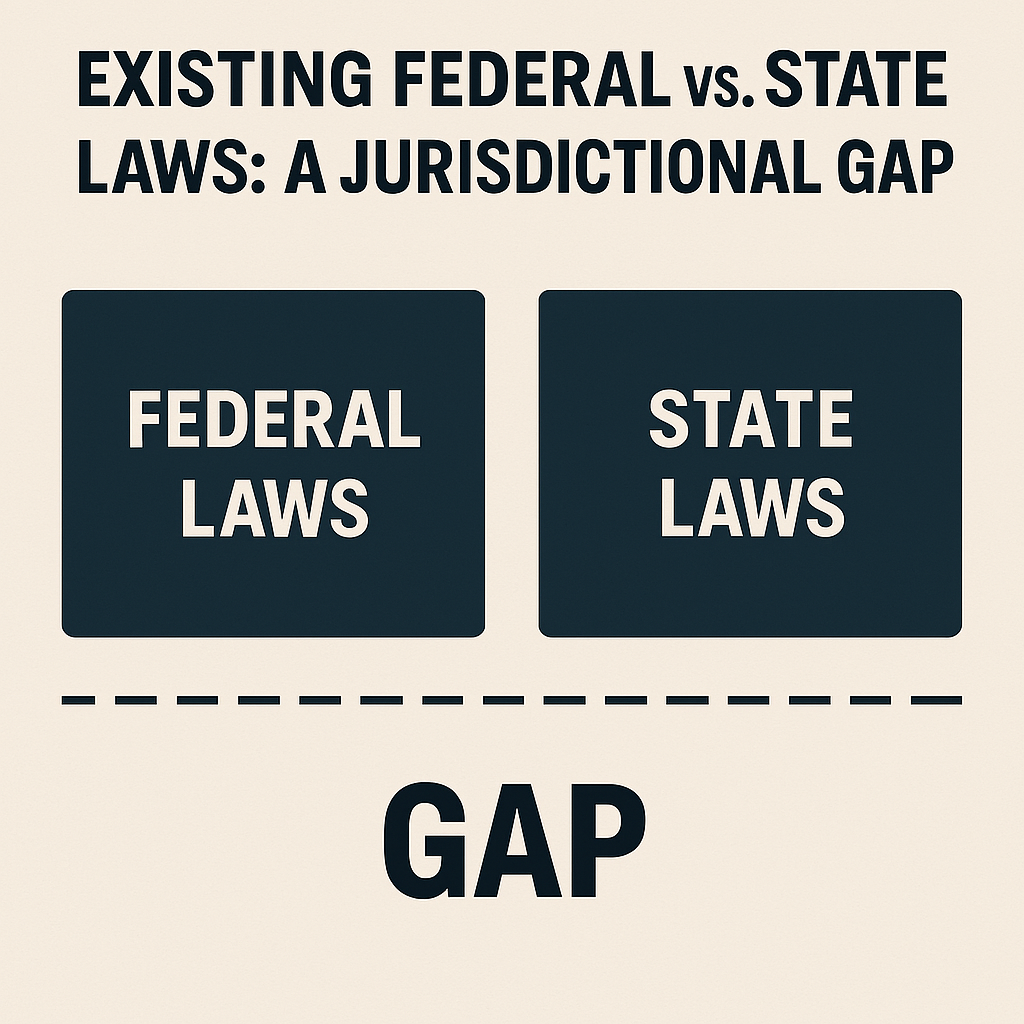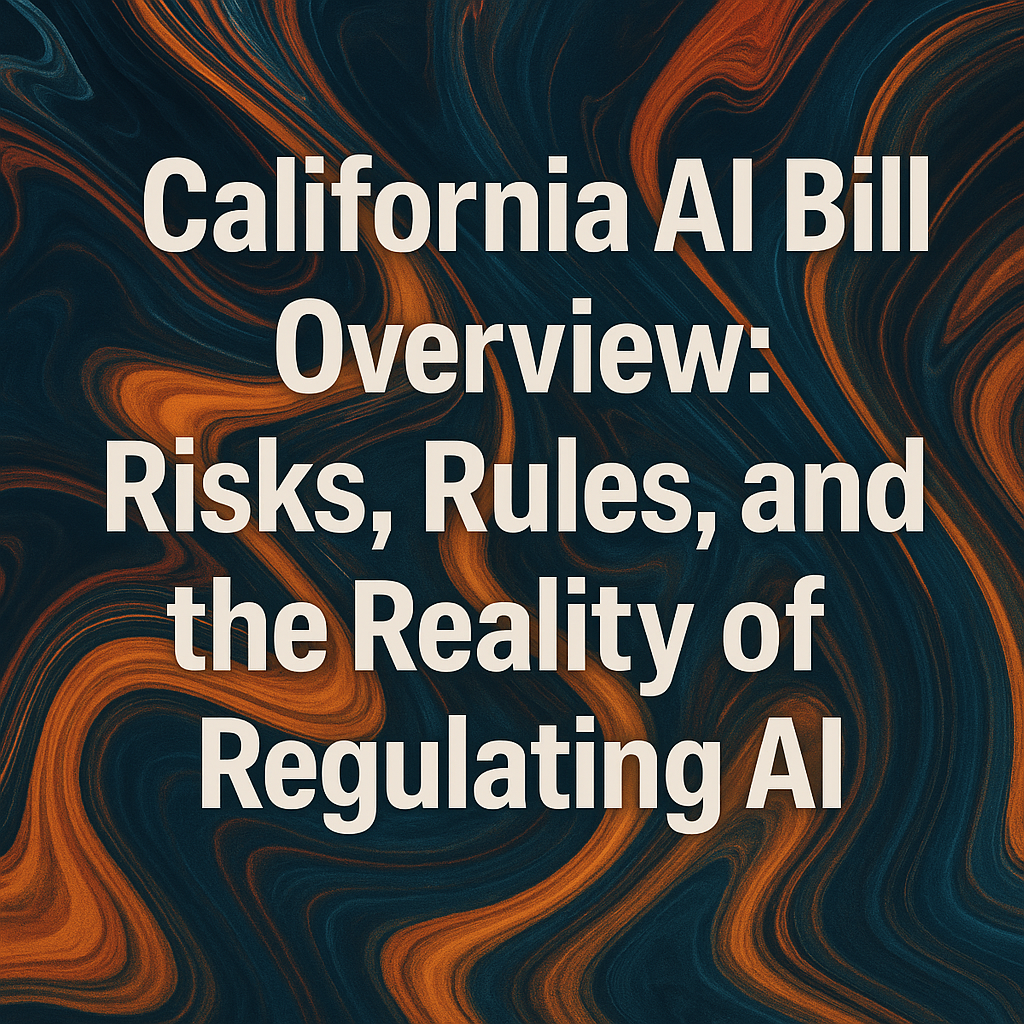Table of Contents
The Rise of Regulation in a Rapidly Evolving Tech Era
In recent years, artificial intelligence has gone from being an experimental concept to an everyday tool, influencing everything from social media to hiring decisions. But with rapid advancement comes serious concerns—bias, misinformation, privacy invasion, and job displacement. Enter the California AI Bill, a legislative move that aims to set guardrails around how AI is used, developed, and deployed within the state.
As someone who has worked on both ends of the AI spectrum—from freelance AI content creation to collaborating with early-stage startups—I’ve seen firsthand how blurry the ethical lines can get. This bill might finally bring the clarity many of us in the tech space have been hoping for.
What is the California AI Bill?
The California AI Bill, officially named the “Safe and Secure Innovation for Frontier Artificial Intelligence Models Act,” was introduced to the California State Legislature in early 2024. Its core purpose? To hold developers of large-scale AI models accountable for how their technologies are used. The bill outlines protocols for testing, transparency, and risk mitigation—particularly in applications that can impact public safety, civil rights, and democratic processes.
The bill proposes:
- Mandatory risk assessments for AI models over a specific capability threshold.
- Disclosure requirements for AI-generated content.
- A framework to ensure AI developers take steps to prevent misuse.
This is not about halting innovation. Instead, it’s a recognition that unchecked AI development could lead to real-world harm. And California, as the tech capital of the world, is setting a tone that others might soon follow.
Why California? Why Now?
California isn’t just home to Hollywood and beaches—it’s the birthplace of giants like Google, Meta, OpenAI, and countless AI startups. Any shift in legislation here sends ripple effects across the globe.
The urgency for the California AI Bill was amplified by recent AI mishaps. One example includes a deepfake video used in a 2023 political campaign in Los Angeles, which reached millions before being flagged. There was also a documented case of algorithmic bias in AI tools used by hiring platforms, leading to unfair rejection of candidates based on race and gender. These aren’t just hypotheticals—they’re real stories that show the potential damage when AI is left unregulated.
For legislators, it’s no longer about “if” AI needs oversight—it’s “how fast” they can implement it before harm scales beyond control.
Existing Federal vs. State Laws: A Jurisdictional Gap

On the federal level, the U.S. still lacks a comprehensive AI law. Agencies like the FTC and Department of Commerce have issued guidelines, but none are binding or fully enforceable. This lack of clarity leaves companies navigating a gray area—especially startups without the legal muscle of tech giants.
The California AI Bill aims to fill this gap by providing state-level protections. Under the proposed rules, companies operating in California must comply—regardless of whether their headquarters are elsewhere. This is crucial, given that many of the world’s leading AI models are trained and launched in Silicon Valley.
Some critics argue this could lead to fragmented regulations across states, but supporters say it’s better than a legal vacuum. As someone who has consulted on tech compliance issues, I can say navigating ambiguity is often worse than following strict but clear rules.
How the Bill Impacts Startups and Tech Giants
When you think of AI regulation, it’s easy to assume only companies like Google or OpenAI need to care. But the California AI Bill doesn’t discriminate—it applies to any organization developing “frontier” AI models above a specific compute threshold.
For startups, this could be a double-edged sword. On one hand, having clear regulations means fewer surprises when scaling. On the other, it adds a compliance burden that small teams might not be equipped to handle.
In my conversations with founders in the San Francisco Bay Area, reactions have been mixed. One startup building AI tools for mental health told me they welcome the bill—it gives them a framework to build safer, more trustworthy products. But another founder working on generative video tech admitted they’re considering moving operations to Nevada if the compliance costs prove too steep.
Tech giants, meanwhile, are already investing in compliance departments. They can afford it. But even they aren’t immune. The California AI Bill would require companies to actively mitigate risks—meaning a failure to foresee or control misuse could result in legal consequences.
Case Study: OpenAI and the GPT Series
OpenAI’s GPT models, including ChatGPT, have become poster children for AI potential and AI risk. While these tools have enabled productivity, creativity, and education, they’ve also raised red flags—hallucinated facts, biased outputs, and impersonation risks.
In December 2023, a group of researchers used GPT-4 to generate realistic but false news articles during a misinformation experiment. Although it was done for academic purposes, it highlighted how easily such models can be misused.
The California AI Bill directly addresses this concern by requiring developers to anticipate and prevent high-risk applications—especially in generating false information. If this law had been in effect, OpenAI would likely have been required to flag and prevent such outputs or face penalties.
As an AI writer myself, I often use tools like GPT-4 to generate content drafts. I’ve noticed how easy it is to slip into a pattern of trusting the model’s output without verification. That kind of blind trust is what the bill aims to disrupt.
Public Reaction and Industry Commentary
Public opinion on the California AI Bill has been divided. Some tech enthusiasts call it premature, while others see it as a necessary measure to protect users and ensure ethical AI growth.
Several civil rights organizations have backed the bill. The Electronic Frontier Foundation (EFF) praised its transparency clauses, especially the part requiring companies to disclose when users are interacting with an AI rather than a human.
On the flip side, venture capitalists are raising eyebrows. Some worry that strict regulation could stifle innovation and drive talent out of California. Andreessen Horowitz, a major tech VC firm, published a blog post calling for more “light-touch” regulation that encourages sandbox experimentation rather than heavy compliance burdens.
From my own perspective, having worked remotely with startups across both regulated (EU) and unregulated (US) environments, I can say this: most developers don’t intentionally build harmful tools. But without incentives to think about risk, many simply don’t. The California AI Bill introduces those incentives—and disincentives—in a way that may actually push the industry toward more responsible innovation.
Labor, Jobs, and the Future Workforce: A Silent Underlying Concern
One of the lesser-discussed aspects of the California AI Bill is its indirect relationship with employment. While the bill doesn’t directly address job displacement, its ripple effects might shape how AI is integrated into workplaces across California.
AI automation has already led to changes in sectors like customer service, logistics, and data entry. A 2023 study by the UC Berkeley Labor Center showed that 16% of jobs in California face a high risk of partial automation due to AI. Another 9% face full displacement risks within the next five years.
This has real implications. One friend of mine—a 28-year-old customer support executive in Fresno—was recently laid off because his company integrated an AI chatbot. He was skilled, loyal, and fast. But AI offered 24/7 efficiency at a fraction of the cost. And while the company technically did nothing wrong, stories like his raise important ethical questions.
The California AI Bill indirectly responds to such scenarios by requiring AI developers to assess potential impacts on employment during risk evaluations. While it’s not a fix, it is a step toward acknowledging and documenting the socio-economic shifts AI could cause.
Education and AI Literacy: Preparing the Public for What’s Ahead
The bill doesn’t just focus on developers and companies—it also indirectly nudges the education sector. It suggests that transparency and public awareness must be part of the equation if society is to adapt responsibly to AI.
In fact, I visited a charter school in Sacramento that’s already including AI ethics in its high school curriculum. The principal told me that understanding how algorithms work is now as important as learning math or reading. Students are learning about bias, decision-making, and how to identify AI-generated content online.
The California AI Bill reinforces this shift by emphasizing clear labeling and disclosure of AI content in public systems. For example, government services that use AI chatbots will need to disclose that users are not interacting with a human. The idea is to prevent manipulation, especially among vulnerable groups like seniors or minors.
As someone who teaches online AI writing workshops, I often see participants shocked to discover how easily AI can manipulate tone, mood, and trust. One student told me, “I thought it was just a robot—but now I realize it can pretend to be anyone.” That level of emotional influence, if unregulated, can be dangerous.
Security, Deepfakes, and the Weaponization of AI
Let’s not sugarcoat it—AI can be dangerous in the wrong hands. Deepfakes have already been used to scam people, attack public figures, and spread propaganda. In 2023, a fake video of a CEO announcing a layoff caused a company’s stock to drop 12% in a single day before it was debunked.
Under the California AI Bill, developers of such technologies would need to conduct threat assessments before releasing AI models with the ability to generate realistic images, videos, or voices. If misused, these tools can impact national security, corporate markets, and even personal safety.
Cybersecurity experts have welcomed this clause. According to a report from Stanford’s Human-Centered AI Institute, nearly 70% of AI developers surveyed said they lacked clear internal protocols for misuse detection. The bill pushes these companies to rethink their deployment strategies and security features before release—not after.
During a recent AI conference I attended in Los Angeles, a speaker from a cybersecurity startup mentioned how hard it is to build guardrails post-launch. “If you throw the tech out into the wild first,” he said, “it’s like locking the barn door after the horse has bolted.”
Business Models and Monetization of AI: An Ethical Check
The California AI Bill also touches on a critical issue: how AI companies make money. Many AI tools are monetized through ads, data tracking, or subscription models. But what happens when those incentives clash with ethical development?
Let’s say a company has the option to warn users about potentially misleading AI content—but doing so might reduce engagement and ad revenue. Without legal obligations, most firms will prioritize profit over caution.
That’s why the bill includes clauses about responsible deployment and transparency in monetization practices. Developers must disclose when AI tools use personal data for training or engagement optimization. This could be especially impactful for companies relying on user-generated content to refine their algorithms.
As someone who has worked with SaaS companies integrating AI, I’ve witnessed internal debates where business priorities often override ethical red flags. The California AI Bill introduces a layer of accountability that can help balance the scale.
International Influence: Will Other Regions Follow California’s Lead?
California has long been a trendsetter. From climate policy to consumer protection, what starts in California often spreads across the U.S.—and sometimes beyond. The California AI Bill could set a template for other states and countries navigating AI regulation.
Already, New York and Illinois are considering similar legislation, while the European Union’s AI Act has gone even further by classifying AI tools by risk level and assigning specific rules to each category.
Experts believe the California bill’s emphasis on pre-deployment risk analysis might influence the U.S. federal government to adopt a similar framework in the future. This would help prevent legal fragmentation and provide clearer national standards.
During a panel I moderated at an AI and Law Summit, one policy advisor noted, “California has the talent, capital, and public scrutiny to pressure tech firms into responsible behavior. That makes it a natural leader in this space.”
From a global perspective, California’s move signals that AI regulation is not just inevitable—it’s already here.
The Developer’s Dilemma: Innovation vs. Regulation
For many developers, the California AI Bill introduces a tough balancing act. On one hand, innovation thrives on freedom and fast iteration. On the other, responsible innovation requires time, testing, and checks. The bill’s requirements—like risk assessments and transparency reports—mean developers will need to shift from “move fast and break things” to “move wisely and think things through.”
During a tech meetup in San Jose earlier this year, I spoke with an AI engineer working at a mid-sized startup. He said the bill is “a bit scary,” but he admitted they had no formal safety review process before releasing new features. “We just launch and patch later,” he told me. “This bill forces us to rethink that.”
This shift could mean slower rollouts, but it also means safer AI experiences for users. More importantly, it encourages a long-term vision of innovation—one where creators consider not only what AI can do, but what it should do.
The Real-Life Cost of Unregulated AI: A Personal Account
I want to share a personal story. Last year, I helped a small local business implement an AI-based customer review filter for their website. It was a simple tool designed to flag fake or overly harsh reviews. But within a week, we noticed the tool had been flagging reviews from users with certain foreign-sounding names more often than others.
It wasn’t intentional. The AI had simply learned patterns from biased training data. But the result was clear: real voices were being silenced.
This is exactly the type of issue the California AI Bill aims to prevent. Had our little AI tool been governed under the proposed law, we would’ve been obligated to perform bias testing before release. At the time, we didn’t even know that was necessary.
The experience opened my eyes. It’s easy to build AI. It’s much harder to build ethical AI. And sometimes, you don’t see the consequences until they’re already hurting someone.
Opposition and Criticism: Is the Bill Too Restrictive?
Of course, not everyone supports the California AI Bill. Critics argue it could slow innovation, especially for smaller developers without the resources to handle regulatory compliance.
Tech libertarians believe the market should regulate itself. They argue that companies with bad AI ethics will naturally lose trust and market share, and that legislation stifles creativity. Some developers even fear that California’s move could create a patchwork of inconsistent laws across states, making it harder for companies to operate nationwide.
These concerns aren’t entirely without merit. Overregulation could stifle AI progress if it becomes burdensome or confusing. However, most experts agree that some regulation is necessary to avoid large-scale harms. The real challenge is finding the balance.
As a writer in the tech space, I often hear both sides. But the truth lies somewhere in the middle. Without rules, we risk building tools that harm. With too many rules, we risk building nothing at all. The California AI Bill attempts to walk that line—and whether it succeeds may shape the future of tech policy in the U.S.
What Comes Next: Implementation, Oversight, and the Road Ahead
As of now, the California AI Bill is still being debated and revised. But its core components are gaining traction. If passed, the next phase will be crucial: implementation and enforcement.
Experts have suggested creating a dedicated AI oversight board in California, made up of technologists, ethicists, legal experts, and civil society representatives. This board would monitor AI systems, audit company practices, and provide public guidance on responsible AI use.
Companies may also need to hire AI compliance officers—similar to data privacy officers introduced after GDPR in Europe. This would represent a cultural shift, where ethical considerations become part of the development process, not an afterthought.
Meanwhile, public education will play a critical role. People need to know when they’re interacting with AI, how their data is used, and what their rights are. This means clear communication, honest disclosures, and perhaps even AI literacy campaigns.
Why This Bill Matters More Than Ever
We’re at a crossroads. AI is no longer science fiction—it’s shaping elections, diagnosing diseases, writing news, and making decisions that impact real lives. The California AI Bill is one of the first serious efforts to create a framework for this new reality.
As someone who works at the intersection of AI and human experience, I’ve seen both the promise and the pitfalls of these tools. I’ve seen how they can empower creators, amplify voices, and simplify work. But I’ve also seen how quickly they can manipulate, marginalize, or mislead—without anyone meaning to do harm.
That’s why this bill matters. It’s not about stopping AI. It’s about steering it. Giving it a code of conduct. Giving developers a map, not a leash.
And maybe—just maybe—making sure we build something that’s not just powerful, but also principled.




Leave a Reply